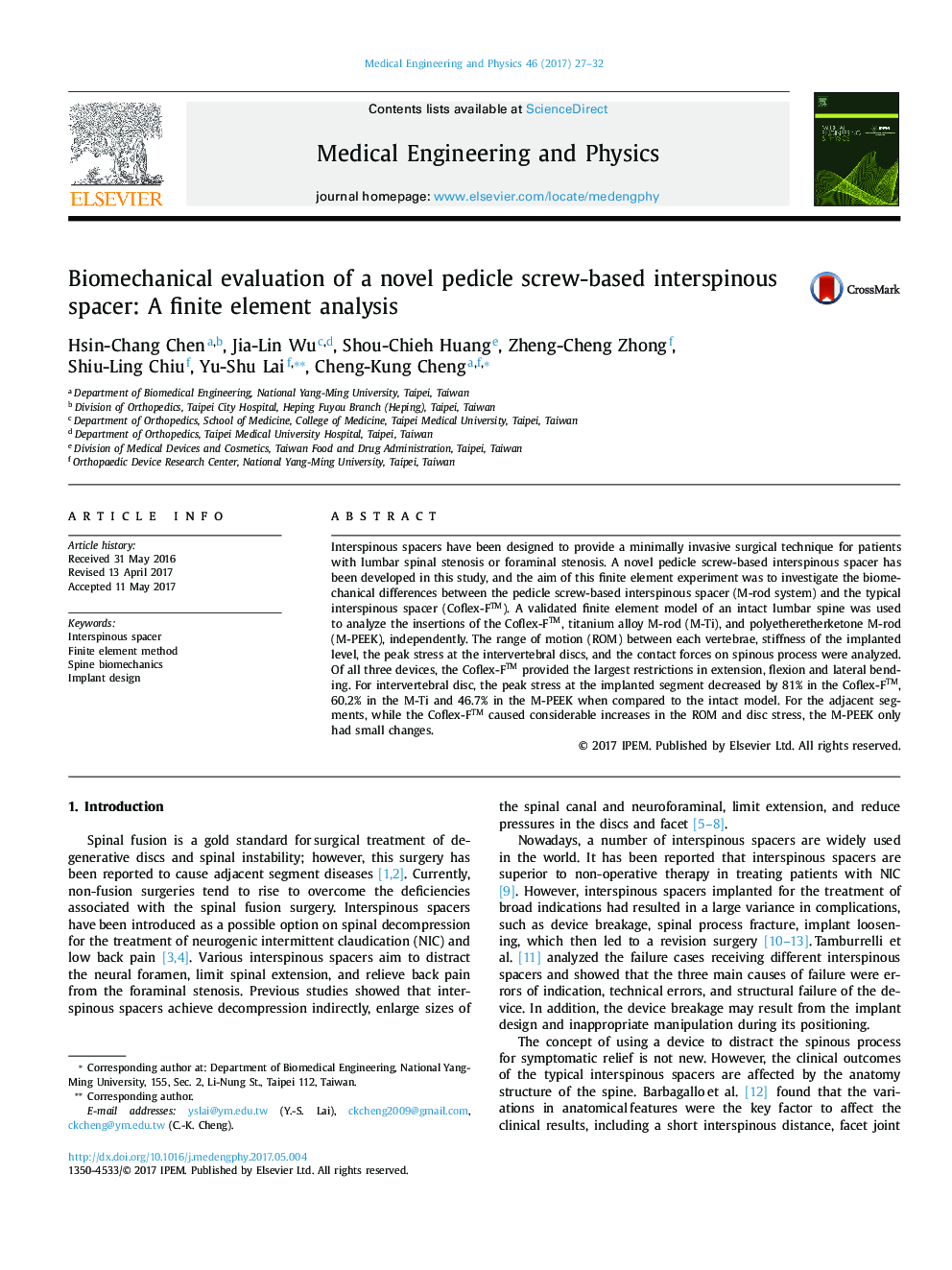| Article ID | Journal | Published Year | Pages | File Type |
|---|---|---|---|---|
| 5032618 | Medical Engineering & Physics | 2017 | 6 Pages |
â¢The Coflex-F resulted in increase of ROMs and peak stress at adjacent discs and may result in adjacent segment degeneration in flexion and extension.â¢The “M-rod” device implantation can provide stability in extension at the surgical segment, and it had no influence at adjacent segments except during extension.â¢The PEEK “M-rod” device had a lower effect on ROMs and stress at both adjacent discs, and then the relatively lower contact force of interspinous process may decrease risk of spinous process fracture.â¢The present study suggested that the M-rod may have the potential to be a useful interspinous spacer.
Interspinous spacers have been designed to provide a minimally invasive surgical technique for patients with lumbar spinal stenosis or foraminal stenosis. A novel pedicle screw-based interspinous spacer has been developed in this study, and the aim of this finite element experiment was to investigate the biomechanical differences between the pedicle screw-based interspinous spacer (M-rod system) and the typical interspinous spacer (Coflex-Fâ¢). A validated finite element model of an intact lumbar spine was used to analyze the insertions of the Coflex-Fâ¢, titanium alloy M-rod (M-Ti), and polyetheretherketone M-rod (M-PEEK), independently. The range of motion (ROM) between each vertebrae, stiffness of the implanted level, the peak stress at the intervertebral discs, and the contact forces on spinous process were analyzed. Of all three devices, the Coflex-F⢠provided the largest restrictions in extension, flexion and lateral bending. For intervertebral disc, the peak stress at the implanted segment decreased by 81% in the Coflex-Fâ¢, 60.2% in the M-Ti and 46.7% in the M-PEEK when compared to the intact model. For the adjacent segments, while the Coflex-F⢠caused considerable increases in the ROM and disc stress, the M-PEEK only had small changes.
